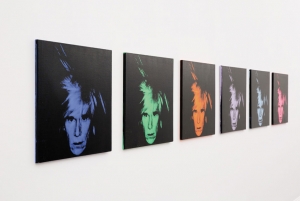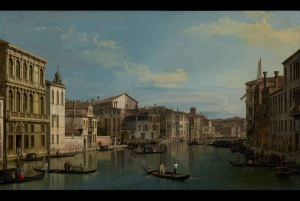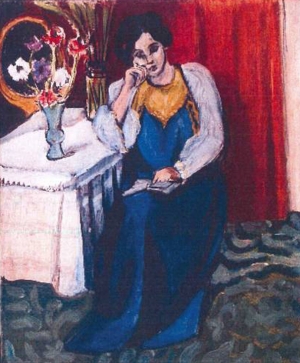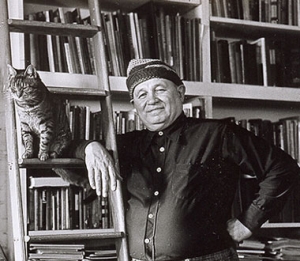|
Displaying items by tag: self portrait
A self-portrait of Sir Anthony van Dyck has been saved for the nation, in the most successful public fundraising campaign for a work of art in the history of Britain.
The Van Dyck portrait, painted shortly before the artist's death, will now stay in the country after more than 10,000 members of the public stepped forward to help raise £10 million.

Sotheby’s will offer a rare series by Andy Warhol titled “Six Self Portraits” during its Evening Auction of Contemporary Art on May 14 in New York. Created in 1986, the self-portraits are among the last works created by the pioneering Pop artist.
“Six Self Portraits” was acquired by the current owners in July 1986 from the London gallery of dealer Anthony d’Offay for $57,500. The works anchored the first and only show in Warhol’s career dedicated to his self-portraiture. Purchased the Sunday before the exhibition opened to the public, it was the first sale in an ultimately sold-out and fabled exhibition. “Six Self Portraits” is expected to fetch between $25 million and $35 million next month at Sotheby’s.
Warhol made his first significant self-portrait in 1963, followed by a small series in 1964. In 1966, Warhol constructed a series of self-portraits in what would become one of his signature styles -- a grid of bright, repeated images. In wasn’t until he made “Six Self Portraits” twenty years later that he would find an equally powerful self-image.

Britain’s Culture Minister, Ed Vaizey, has placed a temporary export bar on one of Sir Anthony Van Dyck’s finest works dating from his time in the UK. The Reviewing Committee on the Export of Works of Art and Objects of Cultural Interest suggested that a hold be placed on the self-portrait, giving potential buyers time to raise the £12,500,000 needed to keep the work in the UK.
Van Dyck played a pivotal role in the development of portraiture in Britain during the time he spent there (1620-21, 1632-35, 1635-41) and the artist was highly regarded by King Charles I who awarded him knighthood, a home and an annuity in 1632. Although Van Dyck produced a number of self-portraits during his career, the work in question is widely regarded as one of his best and acknowledged as being a source of inspiration to other artists.
Vaizey said, “We have recently had a number of successes in preventing national treasures from being permanently exported from the UK thanks to the generosity of donors and the fundraising efforts of our museums and galleries. I hope that placing a temporary export bar on this magnificent painting will allow time for a UK buyer to come forward and ensure it remains here in the UK.”
The decision on the export license application for the painting will be deferred until February 13, 2014. This period may be extended until July 13, 2014 if a serious intention to raise funds to purchase the painting is made.

The J. Paul Getty Museum in Los Angeles has acquired two major works of European art -- a self-portrait of Rembrandt (1606-1669) and a view of Venice’s Grand Canal by the Italian painter Canaletto (1697-1768). The portrait, titled Rembrandt Laughing (circa 1628), will round out the Getty’s collection of early works by the artist, which is the finest if its kind in the country.
The portrait of Rembrandt resided in private collections for centuries before appearing on the market in 2007. The work, which was only known through print reproductions, was attributed to a contemporary of Rembrandt until scholarly analysis and scientific testing proved it to be an authentic painting by the Dutch master. One of nearly 40 self-portraits by the artist, Rembrandt Laughing is the only one in which he appears in costume as he appears dressed like a soldier. The painting will be exhibited in the museum’s East Pavilion along with four other Rembrandt works – An Old Man in Military Costume (1630-31), The Abduction of Europa (1632), Daniel and Cyrus Before the Idol Bel (1633), and Saint Bartholomew (1661).
The painting by Canaletto, For the Grand Canal in Venice from Palazzo Flangini to Campo San Marcuola, is a superior work by the artist depicting everyday life in Venice during the 18th century. The painting will be exhibited alongside Francesco Guardi’s (1712-1793) The Grand Canal in Venice with Palazzo Bembo (circa 1768), which features the same stretch of the Grand Canal as Canaletto’s painting.

Romanian authorities have arrested three suspects relating to an art heist at the Kunsthal museum in the Netherlands. The robbery, which occurred October 16, 2012 at around 3AM, was the biggest art theft in two decades in the Netherlands. The stolen works include masterpieces by Pablo Picasso (1881-1973), Claude Monet (1840-1926), Henri Matisse (1869-1954), and Paul Gauguin (1848-1903) and are believed to be worth between $66 million and $266 million. The paintings have not yet been recovered.
While little is being revealed about the arrests or the suspects, it has been reported that three men are being detained for 29 days at the request of prosecutors from the Romanian Directorate for Investigating Organized Crime and Terrorism. The suspects’ involvement is still being explored, but officials believe the stolen works might be hidden in an undisclosed location in Romania.
The seven stolen paintings, which are part of the private Triton Foundation collection, include Picasso’s Harlequin Head (1971); Monet’s Waterloo Bridge, London and Charing Cross Bridge, London (1901); Matisse’s Reading Girl in White and Yellow (1919); Gauguin’s Girl in Front of Open Window (1898); Meyer de Haan’s (1852-1895) Self Portrait (circa 1890); and Lucian Freud’s (1922-2011) Woman with Eyes Closed (2002). The Triton collection, which was assembled over the course of 20 years, includes more than 150 works of modern art ranging from the 19th century to the present day and spans a number of important art movements.

Picasso Black and White opened earlier this month at the Guggenheim Museum in New York. The first major exhibition to focus on the artist’s lifelong exploration of a black and white palette features 118 painting, sculptures, and works on paper spanning from 1904 to 1971. Five of the works have never been exhibited or published and another thirty-eight works have never been on view in the U.S.
The Guggenheim exhibition has received plenty of praise since its opening but there is one painting in the show that is unlike the others. Woman Ironing (La Repasseuse) is a quintessential image of the disenfranchised people Picasso focused on during his Blue Period (1901–1904). Painted at the tail end of the period, the white and gray palette creates a tired, bleak atmosphere for the frail woman who stands hunched over her iron. But there is something beyond this gloomy woman.
Picasso painted Woman Ironing while he was a struggling artist in his 20s. For economy’s sake he reused an old canvas that he had already used for the beginnings of a portrait of man with a mustache, which he later abandoned. In 1989 an infrared camera detected the presence of the man underneath Woman Ironing. Advances in x-ray and infrared technology have allowed a clearer image of the mysterious mustachioed man and scholars, curators, and conservators have various theories as to who he is. Suggestions include Richard Canals, a rival artist and friend of Picasso, Mateu de Soto, a sculptor with whom Picasso shared apartments and studios with, and Benet Soler, a tailor who was one of Picasso’s oldest friends. Some theories suggest the man with the mustache was one of Picasso’s early self-portraits.
Black and White and Woman Ironing will be on view at the Guggenheim through January 23, 2013.

Romare Bearden: The Paper Truth opens October 24 at the 92nd Street Y’s Milton J. Weill Art Gallery in Tribeca. Featuring 44 works on paper by Romare Bearden who is best known for his expressive depictions of African-American life, the exhibition includes watercolors, collages, and mixed media pieces.
The Paper Truth wouldn’t be possible without Russell Goings, a longtime friend of Bearden. The two met in the late 1960s when Goings was the chairman of the Studio Museum in Harlem and Bearden was a member of the institution’s board. The two struck up a friendship that resulted in Goings’ impressive collection of hundreds of Bearden’s works, some that he bought from Bearden and some he received as gifts from the artist.
The exhibition includes a self-portrait that Bearden made just days before his death in 1988 at age 75. Drawn on a page from a book of Jewish mysticism, the works has never been shown publicly. Two series, The Odyssey and The Historical Figures are also part of exhibition. Bearden made several versions of The Odyssey but the 22-piece series being shown has not been displayed in its entirety in New York in over thirty years. The Historical Figures series, a small collection of portraits of people of all races who helped to shape African-American history, has never been exhibited in New York.
The exhibition, which is on loan from the collection of Russell Goings and Evelyn Boulware (Goings’ longtime companion), will be on view through December 9.
|
|
|
|
|